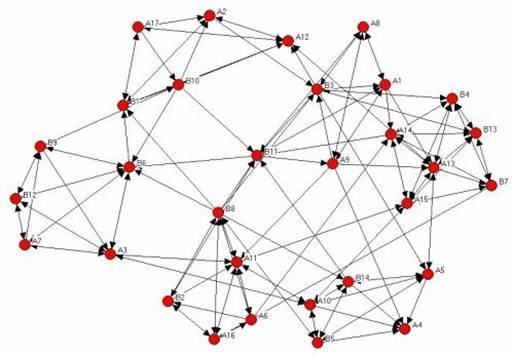Math 5710
Introduction to Applied Mathematics
M W F 11:50 am - 12:40 pm LCB 121
Mathematics is the Queen that
rules the Universe
|

|
Text: Gilbert Strang, Introduction
to Applied Mathematics, 1986
Instructor: Professor
Elena Cherkaev
Office: LCB 206
ph:
801-581-7315
Email: elena@math.utah.edu
Office hours on zoom: M 1:30 - 2:30 pm
and by appointment
When you are sending me an email please include
'5710' in the subject line
|
Class webpage: http://www.math.utah.edu/~elena/M5710/5710.html
Students are requested to wear masks
during in-person lectures.
Course description: The
course gives an overview of methods, problems, and models of applied
mathematics, emphasizing parallels between continuous and discrete
approaches. We will see how differential equations and matrix
equations reinforce each other and go in parallel. "To see the
cooperation between calculus and linear algebra is to see one of the
best parts of modern applied mathematics." /from the Preface of the
textbook/
Optimality and duality is a focus of the course (and another best
part of modern applied mathematics), which expresses itself as a
fundamental principle of energy minimization (or stationarity of the
energy). This principle governs all the processes in the world, and
we will see mathematical justification of that through the same
mathematical framework held for all the problems and topics
discussed in the course. Particular covered topics include
optimization and duality, partial differential equations (potential
flows, electricity and magnetism, equilibrium of fluids and solids,
heat equation and
wave equation), ordinary differential equations (stability,
chaos and fractals, nonlinear conservation laws), networks
(electric, mechanic, social, internet) and transportation
problem.
About the textbook: Renowned
mathematician Gilbert Strang
teaches applied mathematics with the clear explanations,
examples and insights of an experienced teacher. This book
progresses steadily through a range of topics from symmetric
linear systems to differential equations to least squares and
optimization. It clearly demonstrates the power of matrix
algebra in engineering problem solving. This is an ideal book
(beloved by many readers) for a first course on applied
mathematics and a reference for more advanced applied
mathematicians. /Google books/
Table of Contents: http://www-math.mit.edu/~gs/books/itam_toc.html
Prerequisites: Calculus, Linear Algebra,
and Differential Equations.
Course objectives and expected learning
outcomes:
The course gives an overview of ideas, models, and methods in the
Applied Mathematics with focus on uniform framework and
parallels between continuous and discrete approaches.
Upon successful completion of the course, a
student should be able to:
- Understand, utilize, and manipulate basic concepts of
optimality in discrete and continuous problems
- To be able to solve optimization problems with constraints
and Lagrange multipliers
- Have a basic understanding of equilibrium in mechanical
systems, fluids, and solids
- Learn characteristics and properties of electrical
networks
- To be able to solve least squares estimation problems
- Distinguish different kinds of vector fields, such as
gradients and curls
- Have a knowledge of differential equations of equilibrium
Exams: There
will be one midterm, an optional project, and final exam.
Final test:
Tuesday, December 14, 2021
10:30 am – 12:30 pm
Exams policy: Exams will be closed book except that you
may bring a "cheat sheet," an 8.5" x 11" piece of paper with notes
on both sides. Your text, notes, homework papers, calculators,
laptops, tablets, phones, text messaging devices, and books will
not be allowed.
Optional Project/Independent study: The research
project based on the material covered in the course.
Grading: The grade will be based on the homework (30%) and
the exams (70%).
With optional project: on the homework (30%), the exams (60%), and
project (10%).
Plagiarism: Plagiarism is unacceptable and results
in F grade.
Last day to add, drop (delete) classes:
Friday, September 3
Holidays: Labor
Day holiday: Monday, September 6
Thanksgiving break: Thurs.-Sun., Nov. November 25-28
Fall break:
October 10‐17
Classes end: Thursday, December 9
Health Guidance Message:
University leadership has urged all faculty, students, and staff
to model the vaccination, testing, and masking behaviors
we want to see in our campus community.
These include:
Vaccination
Masking indoors
If unvaccinated, getting weekly asymptomatic coronavirus testing
https://attheu.utah.edu/feature/we-need-your-help-to-stop-the-spread/
ADA: The "American with Disabilities Act"
requires that reasonable accommodations be made for students
with physical, sensory, cognitive, systemic, learning and
psychiatric disabilities. Please contact me at the beginning
of the semester to discuss any such accommodation for the
course.
